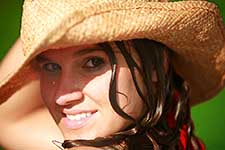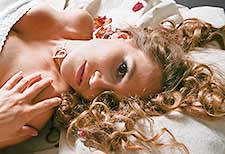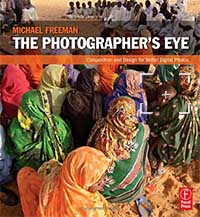I’d like to now share three photography books that you need in your personal library.
The first two come from Scott Kelby, whom you may know from the National Association of Photoshop Professionals (NAPP) because he’s the Editor in Chief of the Photoshop User magazine.
If you’re one of “those” people, hang in there. It’s worth it.
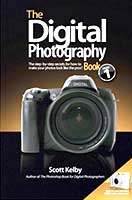 | 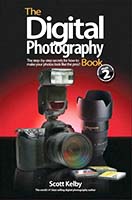 |
The Digital Photography Book (ISBN 0-321-47404-X) addresses how to get really tack-sharp photos by doing things like using the lowest ISO, good quality glass, turning off your image stabilizer, using a sturdy tripod, finding the “sweet spot” in your lens, locking your mirror up first, and using a remote shutter release. Yes, it covers how and why.
You even get tips on how to do a bit of post-processing for extra sharpness, using Unsharp Mask and LAB Colors (not RGB). Even if you’ve done photography for a while, there’s gonna be stuff in here you most likely didn’t know. Or didn’t know how to do well. Or easily.
There’s also practical advice along with little cheats you can do. You’ll understand a light a little better and manipulate the scene to get those wonderful backgrounds and deal with problem lighting problems. If you got yourself committed to taking wedding photos, there’s an important section you need to know.
A lot of photography has to do with composition and compensation. Ever notice how two photographers with the same gear can take a picture of the same thing, and one gets an incredible shot, and the other gets a boring and flat images. You’ll learn why and how to get the good shot.There is even a wonderful section on how to take fantastic portraits; a section on avoiding mistakes; equipment recommendations; and even a section that shows “if you want this kind of photo then do this.”
The Digital Photography Book, Volume 2 (ISBN 0-321-47404-X) covers flash and strobes, reflector tricks, impressive seamless/colored backgrounds, advanced light metering, and how to get those multi-light touches on your subject. More portrait tricks are revealed, along with low-light, sunrise, sunset, and landscape scenes. More is covered on bad weather conditions, weddings, and touring. Again, there’s a shot recipe section in the back. This book is clearly a continuation of the first and not an afterthought or a sequel to make more sales. Good quality stuff.
The next book in your collection should be The Photographer’s Eye by Micheal Freeman (ISBN 0-240-80934-3).Composition is hard to master. Things like frame dynamic, tension, placement, rhythm, etc. all seem pretty artsy-fartsy hand-waving mumbo-jumbo to anyone who’s trying to study the science behind creative photography.
This book explains with contrasting visuals what these terms mean and what you can do to get them. A fantastic illustration (p. 25) shows a bench in a field, but simply by cropping and using angles, the viewers eye is compelled to follow in different directions.
You’ll see how and why the rule of thirds works, how there’s also the golden ratio frame, fibonacci divisions, geometrical slicing, and fractals as alternate methods of placement. You’ll know when to fill the frame, when not to, and where not to. You’ll control the horizon. Convey balance though perceived weights, not just mirroring placement. Foreground, background, contrast, repetition of patterns, broken patterns, perspective, forced perspective, limited color, …there’s so much here.
This book alone will change the way that you view a scene and provide you many different ways to capture it, both in camera and how to make an even more impressive photo by elimination back post-processing.
So there ya have it. Two books to take a really amazing picture, and one book to compose a fantastic one.
REVIEW: Walt gives all three titles here two thumbs up!

